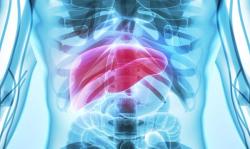Clinical Quiz: AASLD Guidelines for Noninvasive Testing in Chronic Liver Disease
Test your knowledge of the 2024 AASLD Practice Guidelines on blood- and imaging-based noninvasive liver disease assessment with this clinical quiz!
Early identification of moderate-to-advanced fibrosis is essential for improving outcomes in patients with chronic liver disease. Although liver biopsy has long been viewed as the “gold standard” for assessing fibrosis and steatosis, its clinical utility is limited by its cost, invasiveness, and risk of complications, underscoring the importance of noninvasive tests that overcome these limitations.
In 2024, the American Association for the Study of Liver Diseases (AASLD) released a pair of practice guidelines for the use of blood- and imaging-based noninvasive assessment of fibrosis and steatosis, both intended for adult and pediatric healthcare providers who see patients with chronic liver disease.
Test your knowledge of the 2024 AASLD Practice Guidelines on imaging-based and blood-based noninvasive liver disease assessment of hepatic fibrosis and steatosis with this HCPLive Clinical Quiz!
Magnetic resonance elastography is considered superior to transient elastography in what clinical scenario?
References
- Sterling RK, Duarte-Rojo A, Patel K, et al. AASLD Practice Guideline on imaging-based noninvasive liver disease assessment of hepatic fibrosis and steatosis. Hepatology. doi:10.1097/HEP.0000000000000843
- Sterling RK, Patel K, Duarte-Rojo A, et al. AASLD Practice Guideline on blood-based noninvasive liver disease assessment of hepatic fibrosis and steatosis. Hepatology. doi:10.1097/HEP.0000000000000845



